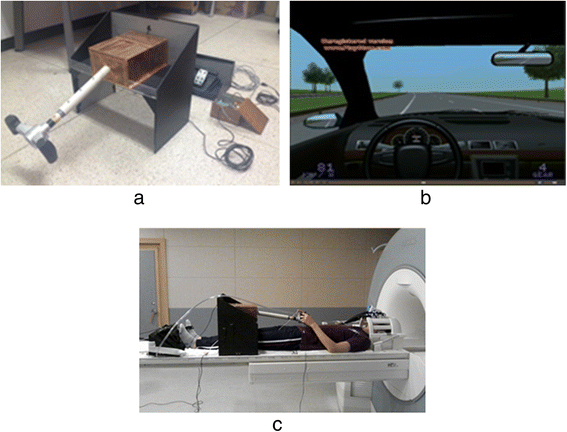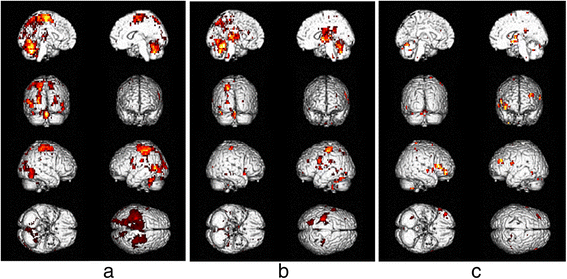Increase in brain activation due to sub-tasks during driving: fMRI study using new MR-compatible driving simulator
- PMID: 28126038
- PMCID: PMC5270359
- DOI: 10.1186/s40101-017-0128-8
Increase in brain activation due to sub-tasks during driving: fMRI study using new MR-compatible driving simulator
Abstract
Background: Several studies have used functional magnetic resonance imaging (fMRI) to show that neural activity is associated with driving. fMRI studies have also elucidated the brain responses associated with driving while performing sub-tasks. It is important to note that these studies used computer mouses, trackballs, or joysticks to simulate driving and, thus, were not comparable to real driving situations. In order to overcome these limitations, we used a driving wheel and pedal equipped with an MR-compatible driving simulator (80 km/h). The subjects drove while performing sub-tasks, and we attempted to observe differences in neuronal activation.
Methods: The experiments consisted of three blocks and each block consisted of both a control phase (1 min) and a driving phase (2 min). During the control phase, the drivers were instructed to look at the stop screen and to not perform driving tasks. During the driving phase, the drivers either drove (driving only condition) or drove while performing an additional sub-task (driving with sub-task condition) at 80 km/h.
Results: Compared to when the drivers were focused only on driving, when the drivers drove while performing a sub-task, the number of activation voxels greatly decreased in the parietal area, which is responsible for spatial perception. Task-performing areas, such as the inferior frontal gyrus and the superior temporal gyrus, showed increased activation. Performing a sub-task simultaneously while driving had affected the driver's driving. The cingulate gyrus and the sub-lobar region (lentiform nucleus, caudate, insula, and thalamus), which are responsible for error monitoring and control of unnecessary movements (e.g., wheel and pedal movements), showed increased activation during driving with sub-task condition compared to driving only condition.
Conclusions: Unlike simple driving simulators (joysticks, computer mouses, or trackballs) used in previous research, the addition of a driving wheel and pedals (accelerator and brake) to the driving simulator used in this study closely represents real driving. Thus, the number of processed movements was increased, which led to an increased number of unnecessary movements that needed to be controlled. This in turn increased activation in the corresponding brain regions.
Keywords: Driving; MR-compatible driving simulator; Sub-lobar; Sub-task (additional task); fMRI.
Figures




References
-
- Groeger JA. Understanding driving: applying cognitive psychology to a complex everyday task. New York: Psychology Press; 2000.
-
- Graydon FX, Young R, Benton MD, Genik RJ, II, Posse S, Hsieh L, Green C. Visual event detection during simulated driving: identifying the neural correlates with functional neuroimaging. Transport Res Part F: Traffic Psychol Behav. 2004;7:271–86. doi: 10.1016/j.trf.2004.09.006. - DOI
MeSH terms
LinkOut - more resources
Full Text Sources
Other Literature Sources
Medical

